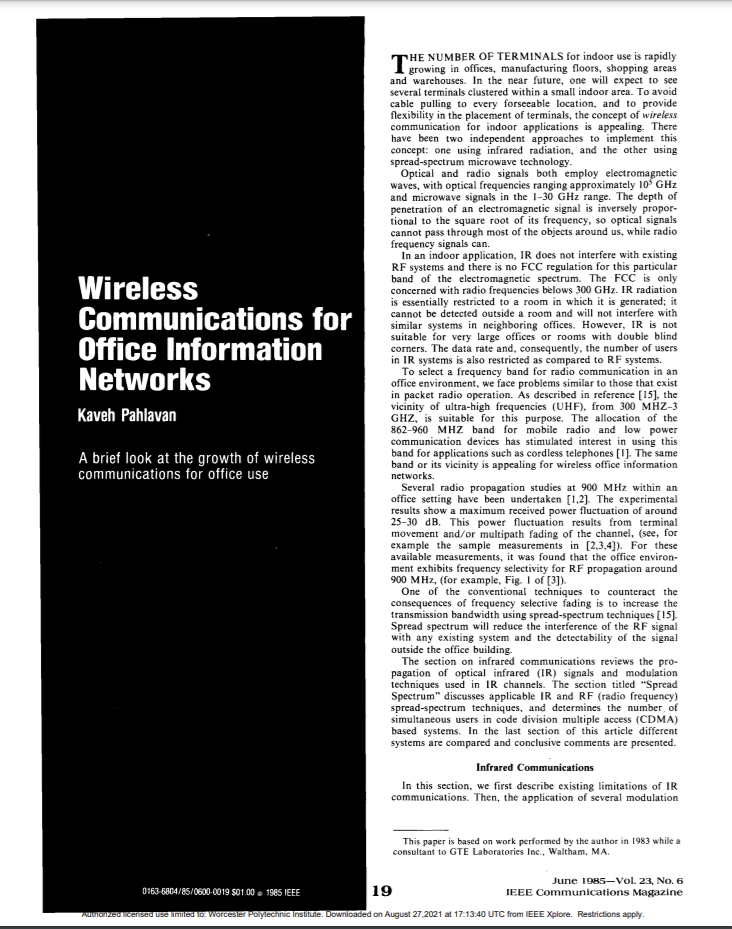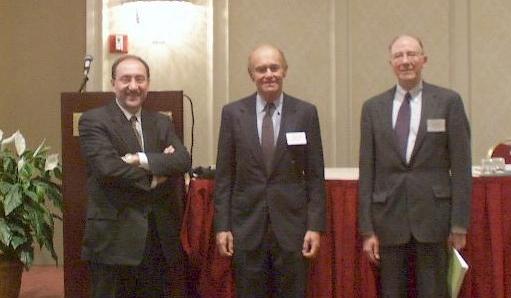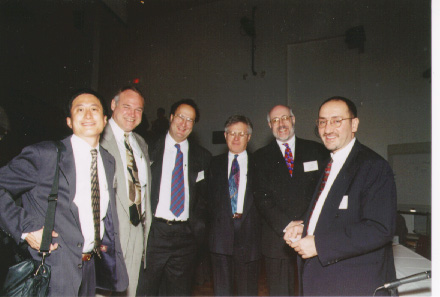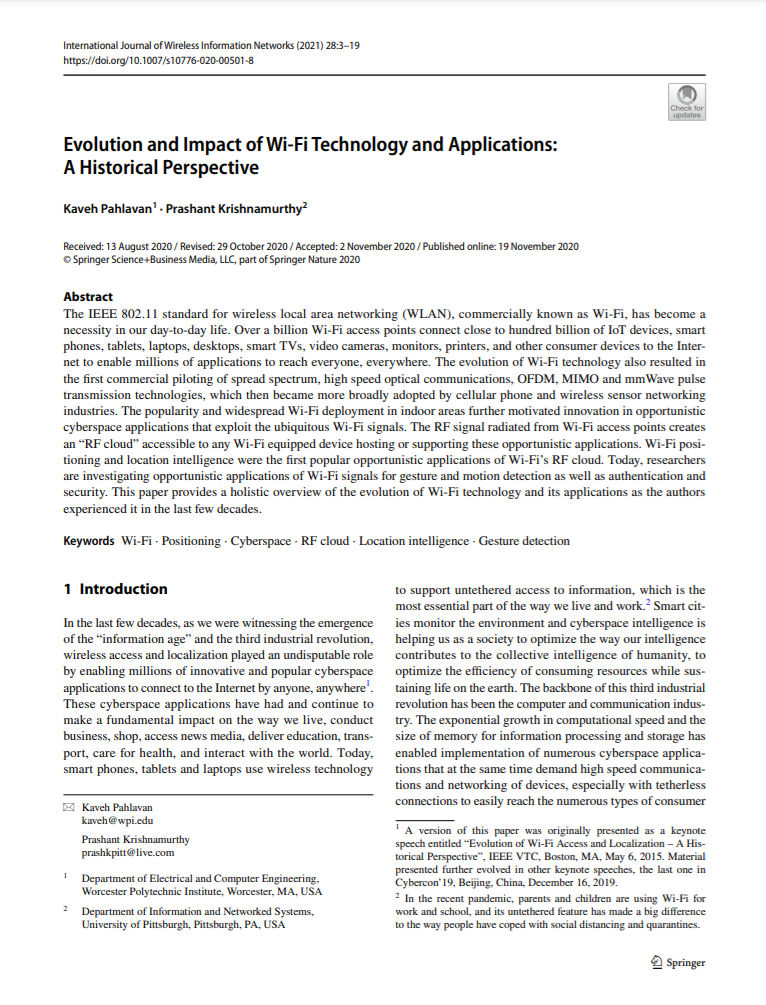Research Contributions:
WiFi, the Wireless LAN

The research program in wireless LAN at CWINS was established by Professor Kaveh Pahlavan in 1985 as the first research program of this sort in the United States. In 1986, the program was awarded the first NSF grant in modern wireless communications to start pioneering work on channel modeling, transmission and multiple access methods for wireless indoor networks.
1985
2021
IEEE Wireless Workshops
Third IEEE Workshop on Wireless LANs

Second IEEE Workshop on Wireless LANs

First IEEE Workshop on Wireless LANs

Major Projects
Experimental Network with Wireless Connectivity (NSF)
- Herman G. Rotithor
- Sridhar Pingali
- Kaveh Pahlavan
- John A. Orr
- Ali Zaedi
- Andy Messier
- Jared Robinson
Channel Characterization, Tranmission, and Network Architecture for Wireless Indoor Radio Networks in Manufacturing Enviroment (NSF)
- Kaveh Pahlavan
- Tom Sexton
- Steven Howard
- Rajamani Ganesh
- K. Zhang
(1) To perform wide band channel measurements for developing a statistical channel model and a computer simulation for indoor wireless radio networks. The measurement sites inculde GM munafacturing plant in Pramingham, Mass; Infinet, Inc., in N. Andover, Mass; Prudential Center in Boston, Mass and WPI.
(2) To analyze the throughput and delay characteristic of ALOHA like multiple accessing techniques in fading multipath indoor enviroments to investigate other multiple access techniques such as CSMA and BTMA for indoor radio networks; and to compare distributed and centeral networks for this application.
(3) To compare analysis of the performance based on various channel modeling techniques; to determine the data rate limitation in indoor enviroment if adaptive equalization is adopted at the receiver; to investigate methods to improve the data rate for spread spectrum techniques in fading multipath indoor channels.
Integrated Multi-layered Wireless LAN Testbed (NSF)
- Kaveh Pahlavan
- Emanuel Agu
- Rick Brown
- Sergey Makarov
- Robert Kineck
- John Orr
Using the IEEE 802.11 WLAN access points, PCMCIA WLAN cards, EKAHAU positioning software, and laptops acquired from the CNS support and our PROPSIM real-time channel simulator acquired from a DoD grant we have completed a novel laboratory testbed for performance evaluation of the indoor positioning systems operating based on RSS. This is the first laboratory testbed that is developed for performance monitoring of indoor positioning systems. The novel methodology adopted in this experiment uses our existing Ray-tracing software to identify location of the training points and measure the performance of the positioning software (in this case EKAHAU engine). The WLAN access points and a laptop with PCMCIA cards as well as the Ray-tracing software are connected to the real-time channel simulator that simulates the channel behavior between location of the access points and the mobile, specified in the Ray-tracing GUI. This innovative setup allows low cost repeatable performance analysis of indoor positioning systems. Our first publication in this field describes the architecture of the testbed and the preliminary results of performance evaluation that relates the density of the training points to the accuracy of the measurements.
Wireless LANs for UMTS (TEKES, Nokia and Sonera, Finland)
- Kaveh Pahlavan
- Jaakko Talviti (CWC/U. of Oulu, Finland)
- Ali Zahedi,
- Prashant Krishnamurthy,
- Ahmad Hatami,
- Yan Xu
- Jari Vallstrom,
- Roman Pichna,
- Juha-Pekka Makela,
- Mika Ylianttila
In its first stage, the project provides an overview of the existing wideband wireless local communication industry. It covers the evolution of the products and market as well as the emerging standardized technologies and other worldwide activities.
The work is done in close co-operation with Professor Jaakko Talvitie, Centre for Wireless Communications, University of Oulu, Finland
CDPD Performance Monitoring Tools (NYNEX Science & Technology)
- Kaveh Pahlavan
Wireless Infrared (Jolt Ltd., ISRAEL)
- Kaveh Pahlavan
- Bernie Doeber
